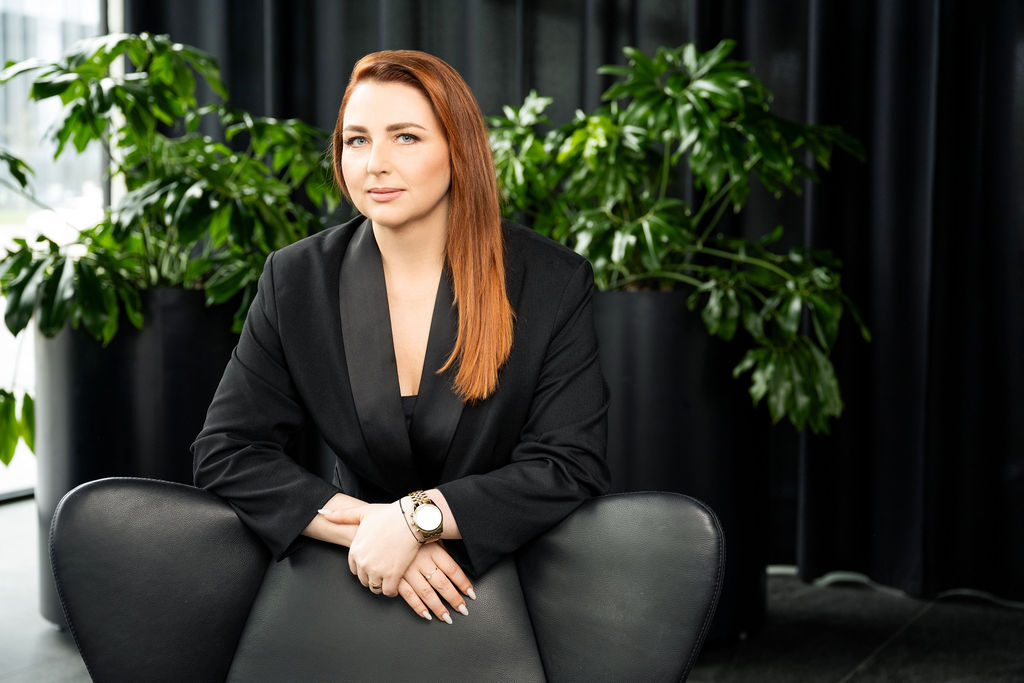When KlasJet organized a complex VIP charter operation for a Middle Eastern client, cultural awareness made all the difference.
While some European team members were initially uncertain about the client’s expectations around service hierarchy and communication, one colleague who had worked extensively in the Gulf region immediately recognized the cultural nuances.
“They stepped in and guided the team on how to adapt our approach, from cabin service style to communicating updates to the client,” explains Sandra Diaso, Head of Human Resources at KlasJet, a premium private jet charter company that’s part of Avia Solutions Group. “As a result, we exceeded expectations – the client felt truly understood and respected – and received repeat business and strong word-of-mouth recommendations.”
This isn’t just good service – it’s the competitive advantage of diversity in action. In an industry built on strong client relationships, cultural fluency translates directly to bottom-line results.
The numbers don’t lie
Research consistently shows that diverse teams outperform homogenous ones. McKinsey’s latest installment in its diversity reports series, Diversity Matters Even More, found that ethnically diverse companies enjoy a 27% financial advantage over less diverse competitors. What’s particularly striking is that despite a recent push back against diversity initiatives, the performance gap is actually widening between more and less diverse organisations.
Demographics may be driving this trend. Millennials and Gen Z, who make up over 60% of the global workforce, actively prefer diverse teams – 69% say they are more likely to stay with diverse employers.
For aviation companies operating in international markets with service-oriented business models, diversity becomes even more critical. Airlines and charter providers work with partners from around the world, serving clients who expect not just technical excellence but cultural understanding and personalized service.
Diversity as a strategic advantage
“Cultural awareness is not just a soft skill, it’s a strategic asset,” says Sandra, whose perspective comes from managing employees from 11 different nationalities at KlasJet. “Diversity, when embraced through inclusive leadership, strong communication, and shared values, becomes a strategic advantage. It helps us remain agile, global in mindset, and connected to the needs of our international clients.”
How exactly does diversity help? Sandra hones in on two specific benefits – cultural sensitivity and problem solving. Working closely with people from different cultures fosters emotional intelligence and the ability to navigate differences with respect and understanding. This makes diverse teams more attuned to the needs of international clients and partners, enabling them to tailor communication and services accordingly.
Consider KlasJet’s work with a multinational sports team. “Our multicultural crew and office staff were able to anticipate and adjust to the varying dietary, religious, and logistical needs of different team members from multiple countries,” Sandra explains. “The result was a seamless experience that left the client impressed by our attention to detail and cultural sensitivity.”
Enabling diverse colleagues to work together
However, managing cultural differences requires focused effort. “A lot of companies assume cultural awareness and team building will manage themselves. But it needs structure, conscious effort and prioritizing,” Sandra warns.
Key considerations include ensuring clear communication and aligning work styles across cultures. People from different backgrounds interpret tone, feedback, and urgency differently. Without proper structure, these differences can create friction rather than innovation.
“Having a common working language is important in ensuring all team members are included,” Sandra explains. KlasJet establishes unified communication standards covering tools, appropriate tone, and cross-cultural sensitivity. “We also have regular team check-ins and feedback loops which ensure we can pick up on any challenges.”
Strategic onboarding and training
Employees from different countries and cultures are likely to have different workplace expectations. “Along with practical considerations like time zones, there are more subtle factors such as language nuances and varying cultural approaches towards hierarchy and decision-making,” Sandra says. In aviation’s fast-paced environment, misaligned expectations can have serious operational consequences.
“Achieving alignment requires an investment of time and resources. At KlasJet, we provide continuous training and create spaces for dialogue where we can constructively address assumptions and differences in approach,” comments Sandra. “It starts with our training and onboarding program, which is critical for setting the tone.”
KlasJet’s onboarding goes beyond company structure and operations. “We embed our values, cultural awareness, and expectations around collaboration to avoid misunderstandings and promote empathy. This includes understanding how cultural backgrounds shape communication, decision-making, and even perceptions of time. We also include cross-functional collaboration practices – team members learn to work effectively with colleagues from other departments, many of whom come from different professional and cultural backgrounds.”
The company pairs new hires with experienced mentors who help navigate the culture and speed integration. “From our onboarding and training through to our mentorship program, the focus is on building confidence, cultural sensitivity, and alignment,” Sandra explains.
Building inclusive culture
Creating lasting inclusion requires intentional hiring practices that go beyond technical qualifications. “If having an inclusive culture is critical for you, you have to hire with this in mind. While experience is the top priority for every recruiter, adaptability, cultural sensitivity, and emotional intelligence often matter just as much,” Sandra says.
Recruiters must ask deeper questions: “Can this candidate listen well, and then adapt? Are they open-minded and curious about other cultures? Can they read the room – whether that’s a virtual meeting or an international negotiation – and collaborate with empathy and professionalism?”
Once talent is hired, maintaining inclusion requires ongoing effort. “We focus on creating connections beyond location – building a culture rooted in shared purpose and mutual respect even though team members are spread across different countries and speak different native languages,” Sandra comments.
Technology enables connection across distances. Using platforms like Microsoft Teams, companies can facilitate clear work communication and encourage informal interactions, casual check-ins, and team celebrations that build relationships.
Start with mindset
For companies aiming to replicate KlasJet’s success, Sandra recommends focusing on mindset first.
“Building a successful international team is much more than recruiting from different countries. It’s about creating an inclusive culture where diversity is valued and everyone is aligned around shared goals,” she explains. “Your leadership must create the psychological safety required for this culture to flourish. People must feel respected, heard, and empowered to speak up. This is essential in aviation, which is a high-pressure industry where flexibility, trust and top-tier service are non-negotiable.”
With the right mindset in place, focus on practical implementation. “Invest in building communication norms that are clear, respectful, and inclusive,” Sandra advises. “Focus on emotional intelligence and adaptability when hiring. And finally, celebrate your team’s diversity. Share stories and mark cultural milestones. When people feel seen and valued, they bring their best selves to the table – and that’s where trust, loyalty, and service excellence really begin.”





